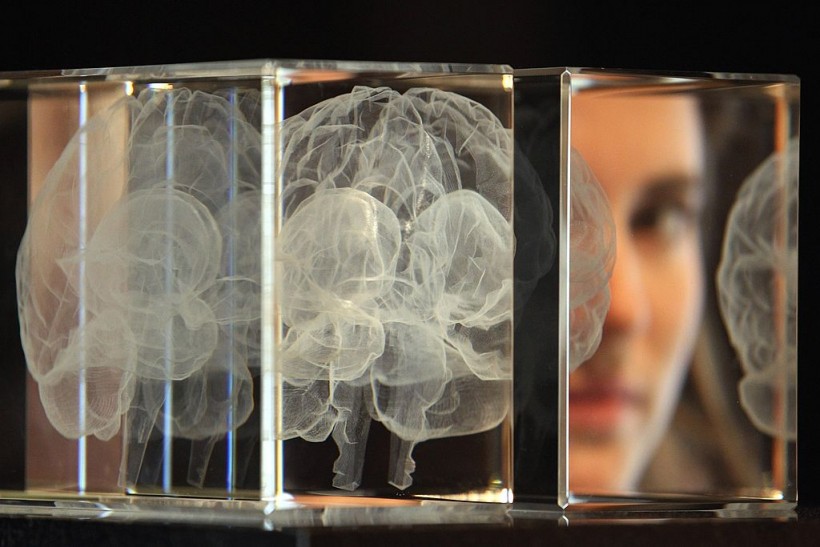In a recent study authored by former OpenAI researchers now affiliated with Anthropic, a novel approach is proposed to gain a deeper understanding of artificial neural networks.
Artificial neural networks are like digital versions of human brains that learn from data, not rules. They can also perform exceptional tasks, from playing chess to translating languages.
Both computer scientists and neuroscientists face the same challenge in understanding how the human brain works, like how the billions of neurons in a human head produce thoughts, emotions, and decisions.
But in this study, the researchers focus on combinations of neurons that collectively create discernible patterns or features instead of scrutinizing individual neurons.

(Photo : Dan Kitwood/Getty Images)
LONDON, ENGLAND - MARCH 27: Wellcome trust employee Zoe Middleton poses behind an artwork entitled 'My Soul' by Katharine Dowson.
Unlocking the Potential of Artificial Neural Networks
These features prove to be more precise and consistent than their individual neuron counterparts, allowing them to capture diverse facets of the network's behavior.
In assessing this methodology, Interesting Engineering reported that a noteworthy limitation becomes evident: the individual neurons within the system lack a distinct and well-defined purpose.
To illustrate, consider a solitary neuron within a modest language model. It may exhibit activity in various scenarios, such as encountering academic references, engaging in English conversations, processing web requests, or analyzing Korean texts.
Similarly, within a vision model, a single neuron might respond to both cat faces and car fronts, displaying versatility that hinges on contextual cues.
Titled "Deciphering Language Models: Unveiling the Power of Dictionary Learning for Monosemanticity," the authors present a novel approach to disentangling the inner workings of small transformer models frequently employed in natural language processing tasks.
Their methodology involves harnessing the capabilities of dictionary learning to break down a layer comprising 512 neurons into a remarkable array of over 4,000 distinct features.
These features encompass a wide spectrum of subjects and concepts, ranging from DNA sequences and legal terminology to web requests, Hebrew text, and nutritional data, among others.
Read Also: Real Human Neurons as Basis of New Computer Chips Are Being Built By This Start Up Company
Employing Two Methods
These multifaceted features remain largely concealed when examining the individual neurons alone. The researchers employ two distinct methods to demonstrate the enhanced interpretability of these features compared to neurons.
Initially, they solicit human evaluators to assess the ease of comprehending the functionality of each feature. The features (depicted in red) consistently outperform the neurons (shown in teal) in terms of interpretability.
Secondly, they employ a large language model to generate concise descriptions for each feature and subsequently use another model to predict the degree of activation for each feature based on these descriptions.
Furthermore, these newfound features empower the researchers to control the network's behavior more precisely. The researchers broaden their perspective and focus on the collective set of features. What they uncover is that these acquired features exhibit universality across different models.
Moreover, Silicon Angle reported that they embarked on experiments to fine-tune the number of features, effectively creating a "knob" that allows for adjusting the granularity of our model examination.
Breaking down the model into a concise set of features yields a broader, more comprehensible view while dissecting it into a larger group of features provides a more intricate, detailed perspective that unveils nuanced model characteristics.
This research emerges as a product of Anthropic's dedication to Mechanistic Interpretability - a longstanding commitment to advancing AI safety. This study paves the way for fresh avenues in comprehending and refining artificial neural networks.
It acts as a bridge connecting the realms of computer science and neuroscience, as both fields share analogous objectives and challenges in deciphering intricate systems.
Artificial neural networks are like digital versions of our brains that learn from data, not rules. They can also perform exceptional tasks, from playing chess to translating languages.
Related Article: Neuralink Brain Chip Update: Elon Musk Says Neurons Will Fire Up in Real-Time on August 28










